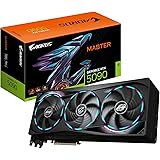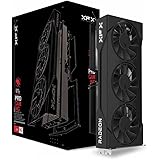Performance and Its Role in Cryptocurrency Mining
The AMD Radeon R9 380X is a noteworthy graphics card that was introduced on November 19, 2015. Although it was created primarily for gaming and graphic performance, it found an unexpected alternate use in cryptocurrency mining. This essay will explore the specifications of the R9 380X, its performance capabilities, and its impact on the mining community.

The Radeon R9 380X is built using a 28 nm manufacturing process and utilizes the Antigua graphics processor. In its Antigua XT variant, this GPU offers solid performance in gaming experiences, capable of handling modern titles through its DirectX 12 support. DirectX 12 is essential as it allows games to leverage the power of contemporary hardware, improving graphical fidelity and frame rates. Thus, when it was released, the R9 380X was positioned in the performance segment, catering to gamers seeking quality without overspending.
One of the standout features of the R9 380X is its relatively strong performance in parallel workloads. This characteristic makes it suitable not only for gaming but also for tasks such as video rendering and, importantly, cryptocurrency mining. As demand for powerful GPUs surged with the rise of cryptocurrencies like Bitcoin and Ethereum, many gamers noticed that older models, including the R9 380X, could be repurposed for mining activities. The card’s ability to perform numerous calculations simultaneously made it appealing to miners who were seeking to maximize their returns on investment.
While the AMD Radeon R9 380X was not specifically designed for cryptocurrency mining, its attributes made it a viable option in that realm. Its initial purpose was to cater to gamers seeking high performance at a reasonable price. Still, it inadvertently contributed to the cryptocurrency boom by offering an alternative for miners. As technology continues to advance, the legacy of the R9 380X endures as a testament to the shifting dynamics within the gaming and cryptocurrency landscapes.
One major aspect of the R9 380X is its power requirements. The card draws power from two 6-pin power connectors, with a maximum power draw rated at 190 watts. This means that it needs a sufficient power supply to function optimally, especially during demanding applications like video games or graphic rendering. Users should ensure that their systems have adequate power capabilities to support this card.
In terms of display connectivity, the Radeon R9 380X comes equipped with multiple output options. It features two DVI ports, one HDMI 1. 4a port, and one DisplayPort 1. 2. This variety enables users to connect multiple monitors or different display types easily, enhancing the overall user experience, especially for gamers and professionals who require expansive screen real estate.
The R9 380X connects to the system via a PCI-Express 3. 0 x16 interface, which is a common standard in modern computing. This technology ensures a high-speed data transfer between the graphics card and the rest of the computer system, allowing games and software to run smoothly. The card measures 221 mm in length and 111 mm in width, making it a manageable size for most gaming and workstation setups.
When launched, the AMD Radeon R9 380X was priced at 229 US dollars. This pricing targeted mid-range gamers looking for a card that could perform well without breaking the bank. Over the years, as technology has progressed, this card has remained a relevant option for casual gamers who may not need the latest and most powerful hardware but still seek good performance.
In recent years, the cryptocurrency market has fluctuated significantly, leading to varying levels of interest in mining. During peaks in cryptocurrency prices, the R9 380X saw renewed popularity among miners looking for affordable options to compete in this increasingly crowded space. Newer models have since dominated the market with improved efficiency and power, yet the R9 380X remains a symbol of the GPU mining era that first captivated many tech enthusiasts.
Summary of the AMD R9 380X Specifications :
- Cooling System : IceQ X²
- Core Clock : 990 MHz
- Memory Type : GDDR5
- Memory Interface : 256 bit
- Memory Clock : 5.7 Gbps
- Memory Size : 4096 MB

The Mining Capabilities of the Radeon R9 380X
The Radeon R9 380X is a graphics card that has gained attention among cryptocurrency miners for its efficiency and performance. As the demand for cryptocurrency mining has increased over the years, understanding the hashing capabilities and power consumption of different graphics cards, including the R9 380X, is crucial for miners looking to maximize their returns.
One of the most popular algorithms used in mining is Ethash, primarily utilized for Ethereum mining. The Radeon R9 380X can achieve a hashrate of approximately 20 to 22 MH/s when mining Ethereum. However, this performance comes with a power draw of about 190 to 220 Watts, resulting in an efficiency of around 0. 10 MH/W. This relatively high power consumption means that while the R9 380X can deliver a decent hashrate, miners must carefully consider their energy costs to determine their overall profitability.
Another cryptocurrency that the R9 380X can mine is Ravencoin, which uses the KawPow algorithm. The hashrate for Ravencoin ranges from 9 to 11 MH/s, with a power draw similar to that of Ethereum, roughly 180 to 210 Watts. This translates to an efficiency of about 0. 05 MH/W. While the hashrate may seem lower compared to Ethereum, the choice to mine Ravencoin depends on market conditions and personal mining preferences.
Mining Ethereum Classic, which uses a similar algorithm to Ethereum called Etchash, results in a hashrate of around 20 MH/s with a power requirement of roughly 190 Watts. This efficiency mirrors that of Ethereum, making it an attractive alternative for miners who want to diversify their portfolios while maintaining similar performance metrics.
For those interested in different algorithms, the Radeon R9 380X can also mine Vertcoin using the Lyra2REv3 algorithm, achieving hashrates between 30 and 35 MH/s. This is a notable improvement in efficiency as it operates at a power draw of 150 to 200 Watts, leading to moderate efficiency compared to other coins.
Lastly, the card can mine Zcash, utilizing the Equihash algorithm, producing a hashrate of about 150 to 170 Sol/s with a power consumption of 200 Watts. This results in an efficiency of roughly 0. 85 Sol/W. The R9 380X’s adaptability to various cryptocurrencies and algorithms makes it a viable option for miners.
The Radeon R9 380X presents a balanced choice for cryptocurrency mining with its reasonable hashrates across different algorithms and relatively high power consumption. Understanding these factors helps miners make informed decisions and optimize their mining operations for better profitability.
Summary of the AMD R9 380x Mining Hashrate :
- DaggerHashimoto [ EtHash : (ETH) & (ETC) ] Mining Hashrate : 20.63 MH/s
- Decred (DCR) Mining Hashrate : 0.89 GH/s
- Cryptonight [ (XMR) & (XDN) ] Mining Hashrate : 0.57 kH/s
- CryptoNightV7 Mining Hashrate : 0.53 KH/s
- Lbry ( LBC ) Mining Hashrate : 0.05 GH/s
- Equihash [ (ZEC – ZEN – ZCL) & (BTG) & (KMD) & (HUSH) ] Mining Hashrate : 175 Sol/s
- Pascal [ (PASC) & (PASL) ] Mining Hashrate : 0.6 GH/s
- X11GOST [ Sibcoin (SIB) ] Mining Hashrate : 2.8 GH/s
Power Consumption : 250 Watt/Per Hour.





